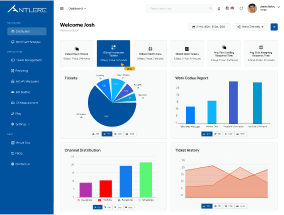Customer Experience Transformation in the Age of Automation
Just imagine entering a shop where you are instantly recognized and your name is called out in greeting, where staff know exactly what you want and take the time to offer recommendations instead of queuing at checkout or searching for items on shelves. Now picture a similar frictionless journey on digital channels maybe a banking app, or retail website, or the chat of a customer service rep. This is not some future, far-off phenomenon; it’s the age of automation wellsprings that are being triggered in the customer experience transformation happening today.
As automation and AI technology redefine jobs, companies discover that digital transformation is synonymous with customer experience. Companies who transform and automate customer journeys are not just meeting changing demands; they’re inspiring new standards for the next evolution of customer service.
The Role of Automation in Digital Customer Experience Transformation
Digital transformation customer experience is no longer simply the act of adding technology and instead means changing and moulding how customers think about, make use of, feel about or connect with a brand. D&B: Automation is at the heart of this transformation, removing friction and enabling companies to enable that hyper-targeted experience at scale.
In fact, Gartner’s 2025 report indicates the top priority for 73% of businesses undergoing digital transformation is customer experience – underscoring that there’s a strong correlation between customer digital transformation and sustainable long-term business success.
What is the connection between digital transformation and customer experience?
The correlation is automation and how it can change the way that businesses engage with their customers. Digital transformation for CX is about putting tools like AI-powered chatbots, self-service portals, predictive analytics and omnichannel platforms to work where they can deliver experience transformation that feels human even when it’s powered by machines.

Customer Experience Transformation: Beyond Efficiency to Loyalty
Yes, the number one advantage of automation is efficiency, but CX transformation isn’t just about how quickly or efficiently you can respond to customer inquiries (erm and pay less in employee costs) – it’s about loyalty. Customers today expect seamlessness, personalization and relevance. Brands that are able to predict needs and deliver seamless experiences across digital and physical channels are at the forefront of shaping customer experience.
Example:
Retail superpowers like Amazon and Alibaba have redefined customer service digital transformation employing recommendation engine, automatic order tracking & AI-based support to take customer experience digital transformation as a competitive advantage.
Key Customer Experience Trends in the Age of Automation
The digitalization devours everything, and the worldwide market is taking giant strides in customer transformation, where five future-oriented trends are influencing the form of customer experience:
- Bespoke Automation: Deploying data-informed automation which provides the special feel that every individual customer would appreciate.
- Omnichannel Consistency: Shoppers want the same smooth experience on mobile, web, in a building or over the phone.
- Support Fueled by AI: Chatbots and virtual assistants cutting down on queues, offering 24/7 solutions.
- Proactive Engagement: Automation so intelligent it foresees when the customer’s need is coming around the bend.
These examples demonstrate that to change the customer experience, you need to strike a balance between automated processing and empathy – ensuring customers feel valued and not just processed.

Table: The Impact of Automation on Customer Experience Metrics
Metric | Traditional CX (Pre-Automation) | Automated CX (Post-Transformation) | Improvement % |
Average Response Time | 12–24 hours | Instant to 2 minutes | 85% |
Customer Satisfaction (CSAT) Score | 72% | 89% | +17% |
First Contact Resolution (FCR) | 65% | 85% | +20% |
Customer Retention Rate | 68% | 82% | +14% |
Operational Costs (Support Centers) | High | Reduced by 30–40% | Significant |
Industry benchmarks affirm the impact of digital transformation in customer experience, resulting in noteworthy gains across sectors.
Challenges and Ethical Considerations in Customer Experience Digital Transformation
Even as automation (and AI) leads the way, businesses are struggling with authentic and ethical concerns in CX. In addition, over-automation can result in depersonalization, breach of data privacy and absence of human touch in sensitive situations.
The corporation is in a tension between efficiency and empathy and faces an ethical challenge. For instance, if human support is completely replaced with bots, customers have had negative experiences when they require additional assistance for more complicated issues. Therefore, enterprises must drive transform customer experience initiatives that leverage automation and human intelligence in harmony with each other.
Transforming the Customer Experience: Practical Steps
Here are four steps that companies should take to jump in and embrace CX and digital transformation:
- Analyze the Customer Journey: Pick out “pain points” and areas where automation makes a difference.
- Embrace Customer-Centric Technology: Opt for technology that improves rather than replaces personalization.
- Automate and Train Teams: Enable staff to address exceptions, offer empathy when required.
- Measure and Optimize: Leverage big data analytics to constantly improve the customer experience transformation.
The Future of Customer Service Transformation
The future of customer service transformation is the combination of high-end automation and human empathy. Those that get the formula right will develop memorable interactions, engender loyalty and earn the confidence of customers over the long term.
The trend of customer experience in digital transformation is an indication that the world is heading towards a combination of convenience, speed, and personalization. But those companies that move past transactions to create emotional connections will make an impression.
Conclusion: Abacus BPO as a Driver of Experience Transformation
In an automated world, customer experience transformation is a performance game. Businesses can no longer depend upon legacy systems or siloed experiences. What they need is an integrated platform that gives them economic automation, in-depth analytics and insights into their customers.
This is where Abacus BPO becomes very important. Built for customers to go through a digital transformation journey, Abacus BPO enables companies to level up their customer experience by automating and adding intelligent personalization. Whether you want to optimize support, increase engagement or build a loyal customer base; Abacus BPO enables businesses to stay ahead in the ever-changing digital world.
The fruit of adopting CX transformation, empowered by platforms such as Abacus, is not just an overhaul of the processes but shaping up how customer relationships will look like in future.

Author









